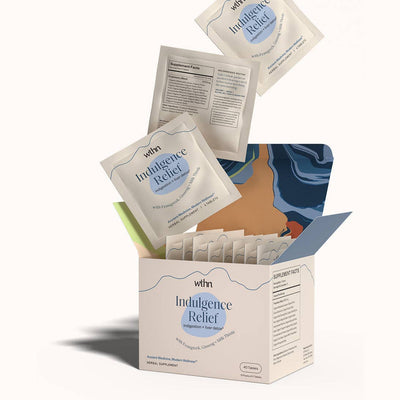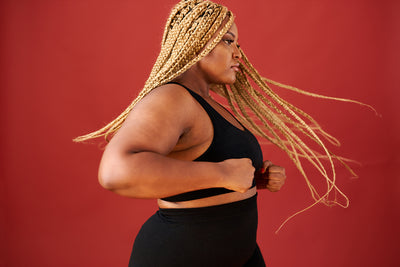The National Academy of Medicine and the U.S. Dietary Guidelines recommend that everyone should take in 0.36 grams of protein per pound (0.8 grams per kg) of body weight. So someone like me who is 150 pounds should have 54 grams of protein a day. This is for the average sedentary adult. But one thing we know about The Fit In community is that we are not sedentary. So, what’s the amount of protein for us? It all has to do with your body composition.
Let’s break down why protein is important, how to calculate the amount of protein you need, and ways to hit that goal.
Why do we need protein?
Proteins are the building blocks of our body. Anything considered lean mass in our body, excluding water, relies on protein to exist and function. Our hair, nails, skin, bones, joints, organs, and muscles all need protein.
Protein can also help when looking to obtain or maintain a healthy body composition. Increased protein tends to decrease hunger and provide satiety. It helps maintain our muscle, preserving our lean mass. The more lean mass you have, the more calories you burn.
Protein is made of over 20 amino acids. And while our body can create some of those amino acids, the rest must come from diet.
American Dietary Guidelines say that 10% to 35% of your daily food intake should be protein. That’s a huge range. What they are saying is if you eat 2,000 calories a day, that means 200-700 calories should come from protein (50-175 grams). So where does that leave everyone?
How much protein do I need?
Many people need to eat more than the recommended amount. As we get older and hit our 40’s, we have to tackle bone and muscle loss as well as skin elasticity. Because of this, we need to increase our protein intake.
Same applies to growing children and adolescents who need more protein to promote bone and muscle growth.
Pregnant and breastfeeding women also need more protein since…you know…they’re making a whole human.
Those who strength train also need to consume more protein to maintain the muscle mass you’re building.
Many people need much more protein than the Recommended Dietary Allowance (RDA) but how do you calculate that?
Even a dietician will tell you that nutrition science is still new and still evolving. There are so many different body types, body needs, eating habits so everyone’s needs will be different. But there is strong research out there that guides them in their macronutrient recommendations.
Most studies show that for those who are looking to build or maintain muscle and even lose weight, you should consume 0.7–1 gram per pound of lean mass. The issue is that most people don’t know their lean mass. Those who are sedentary have much less lean mass, hence the modest RDA. But those who actively train or generally carry more muscle (Like Black women and men) tend to need more. For example, my lean mass (as of today anyway) is 126 pounds. How do I know? I do an InBody Body Composition analysis monthly to see how my body composition is progressing.
The RDA of protein for pregnant women is 60 to 100 grams per day or 25% of your caloric intake. Breastfeeding women is a minimum of 54g or more per day. But again, if you yourself have more muscle then that will increase.
Older adults are recommended to double to the RDA amount to avoid loss of muscles, strength, and function.
Is there such a thing as too much protein?
Just as with anything, there can be too much protein. When consuming more protein than necessary, the rest will store as fat, though not as efficiently as excess fat and carbs can be stored as fat. Studies show that protein is stored as body fat with roughly 66% efficiency, while carbohydrates store with 80% efficiency and fats store at 96% efficiency.
What are ways to get in more protein?
Consuming more protein can be easy, but the quality of the protein matters. Animal products like eggs, meats, and dairy are complete proteins meaning they contain significant amounts of the nine amino acids that our bodies can’t produce on their own.
Whole soy products like tofu and edamame are also complete sources of protein for those looking for vegetable proteins. Peas, seeds and nuts are less complete so you would need to mix and match your proteins if you are a vegetarian or vegan.
There are varying levels of protein in different foods. Here are some popular foods and their protein content:
- 3-ounce serving of skinless chicken breast- 27g of protein
- 3-ounce serving of 93%-lean ground beef- 22g of protein
- 3-ounce serving of salmon- 19g of protein
- 1 cup lentils- 18g of protein
- 1 large egg- 6g of protein
So someone like me who needs to eat about 125g of protein a day, can eat 2 eggs for breakfast, 6 ounce of salmon for lunch, and 6 ounces of chicken for dinner, but still not be able to get enough protein in. That’s where supplementation can help.
Whey, egg, and soy protein powders can offer a supplementation of complete protein to help hit those protein goals. Less complete proteins like bovine collagen, which is great for skin & joints, and rice proteins can also help as long as its combine with other proteins in your diet making sure you get in all the essential amino acids in a good amount.
Just don’t try to eat all your protein in one sitting as you can only absorb between 25 and 40 grams of protein in one sitting.








Leave a comment